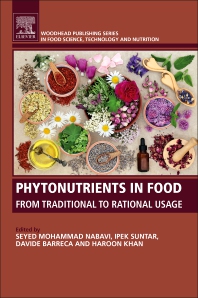
Chemo diets should be based on foods that have high amounts of protein, since the treatment will increase the breakdown of protein in your body. Because you will only be satisfied with a few bites of food, this is an important aspect to consider when planning a meal. Healthy fats and proteins are the most important. If you need to, supplements can be added. These foods will help to maintain a healthy weight.
Many foods are high on protein and carbohydrates, so it is wise to eat a variety. It is best to avoid avocado skin, as it can harbor Listeria and food poisoning. Avocado is a great source of nutrients if you can stomach it. You will be satisfied regardless of your hunger pangs. The high protein and low calories of eggs make them a good choice for chemotherapy diets.
Carbohydrates are your body's primary source of energy. Carbohydrates are essential for the body's energy needs. Carbohydrates can be found in fruits, vegetables, whole grains, legumes, and beans. People with cancer should avoid spicy, acidic foods. These foods can irritate the mouth and throat. These foods should not be consumed. A chemotherapy diet should consist of five to six small meals daily. For those moments when you feel hungry, snacks are a must.
Another great option for chemo diets is fish. These fish have omega-3 fatty acids that are good for your brain and immune system. Since seafood, like salmon and mackerel are high in proteins, it is recommended to eat them as often as possible. You can also benefit from eating these fish, as they are rich with omega-3 fatty acids. You can choose from any kind of seafood such as mackerel or sardines and even albacore tuna.
If you are a vegetarian or vegan, plant protein shakes are a great choice. These shakes can be used to meet the protein requirements of vegetarians and vegans. Greek yogurt, eggs and lentils are great options for meat-free people. However, beans, legumes and legumes should be your main focus. While you are not allowed to eat meat, you can enjoy a bowl of cooked fish. Because they are high in protein, a vegan diet should be based on beans and lentils.

A chemo diet should also include foods that have anti-nausea properties. Those who suffer from cancer should eat a lot of fresh fruit and vegetables. They should also limit their intake of highly processed foods and hydrogenated oils. These foods increase inflammation. A chemo diet should contain as much protein as possible. It is important to remember that nausea can be caused by fried food.
During chemo treatments, people with cancer may lose their appetite and lose essential vitamins and nutrients. Patients shouldn't consume more than three meals a day while they are undergoing treatment. Instead of three large meals, they should eat six small meals throughout the day. They should drink lots and lots of water. They should consume plenty of fruits and veggies and limit sodium and potassium intake. If you are undergoing chemotherapy, you should consult with your oncologist for the appropriate food intake.
Side effects may occur with chemotherapy, which is the mainstay of treatment for cancer. In addition to ensuring that your body is as healthy as possible, a chemo diet can help you keep a healthy weight. A chemo diet shouldn't cause constipation but it should provide essential nutrients such as protein and water. A diet high in dietary fibre is essential.
FAQ
How Much Does it Cost to Learn Culinary Arts Skills?
It is not easy to find a culinary arts degree that costs less than $40,000. A four-year degree in culinary arts typically costs around $40,000. On the other hand, a two-year associate's degree may cost less than $5,000. Tuition costs vary depending on which program you choose. Prices for tuition are higher in private institutions than they are for public ones.
How can I learn more about cooking?
All over the country, cooking classes are offered. Many schools offer courses on baking, pastry, or wine tasting. You can learn more about how to cook by enrolling in a class at either a local vocational school or community college.
Which career path is best for someone who wants a career as a chef or chef? How can I get started in my career as an chef?
An apprenticeship is a good way to start your career as a chef. Apprenticeships offer the chance to work for several year without any tuition fees. After your apprenticeship, you may apply for a role as a sous chef. Sous chefs are responsible for supervising cooks and helping them prepare salads or desserts. They also oversee the entire operation of the restaurant.
What's the difference between a professional chef and an amateur cook?
A chef cooks for others. A cook cooks for others. Although both jobs require you to prepare food, a chef is more involved in serving customers. This means they may have to decide what to serve guests based on their preferences. The cook doesn't have to interact with customers. Instead, the cook ensures that the food tastes great before serving it to customers.
What is the best way to learn to cook?
Cooking can be something everyone should master. It's a great way to experience delicious food without having to learn how to cook. You must start by finding a recipe you enjoy and following it closely when you learn to cook. You'll then want to practice small adjustments until you feel confident making the dish. Finally, try cooking for others. This will not only help you cook better, but it will also test your skills.
Statistics
- According to the BLS, chefs earn $58,740 a year. (learnhowtobecome.org)
- under 10 Kids have been taught that there is special food just for them, and Fiese says that 10 percent of kids will throw a tantrum if they don't get the food they want. (washingtonpost.com)
- In the United States, the category is estimated at $23.2 billion annually and is growing faster than the market. (washingtonpost.com)
External Links
How To
How to make an omelet that is perfect
Omelets are my favorite breakfast dish. How do you make them perfect? There are many recipes and methods I tried, but none worked. So I am sharing some tips and tricks today to help you make fluffy, delicious omelets every morning.
We should first know that eggs are very temperamental ingredients when making omelets. You must get them fresh, organically, and keep them cold until you cook. You must keep them cool enough to allow the whites to form properly and the yolks to become too runny if they're not kept at the right temperature. This makes your omelets look weirdly colored. It is best to use room-temperature eggs if you are going to cook them right away.
You can also separate the egg before you add it to the pan. You don't want any white to get mixed up with the yolk because this could cause the omelet to curdle.
If you add the egg directly onto the stovetop, you might end up burning the bottom part of the egg, which would ruin the texture of your omelet. Instead, place the egg in the microwave for 10 second before you put it in the skillet. The heat from the microwave cooks the egg just enough without overcooking it.
Let's now talk about mixing eggs. Mixing eggs together is important. You need to beat them well. Turn the bowl upside down and grab the whisk to do this. Next, shake the bowl vigorously. This way, the air inside the bowl gets whipped around and mixes the egg thoroughly.
Now comes the fun part: adding the milk to your mixture. Fold the eggs in the milk mixture by first pouring half of it into the egg whites. If you still see streaks of eggs, don't worry. These streaks will disappear once the omelet has been turned over.
After you have done folding the eggs, heat the pan on medium heat. The oil will start to smoke. Once the oil has gotten hot, add 1/4 cup of butter and swirl it around so that the entire pan is coated. Now carefully crack open the lid of the pan and sprinkle salt into the pan. A pinch of salt will prevent your omelet from sticking in the pan.
Once the omelet forms, cover the pan again. Let the top side set completely. Flip the omelet by using a spatula. Cook the other side for another minute or two. Serve immediately after removing the omelet from its pan.
This recipe is best made with whole milk. However, it can also be used with skimmed milk.